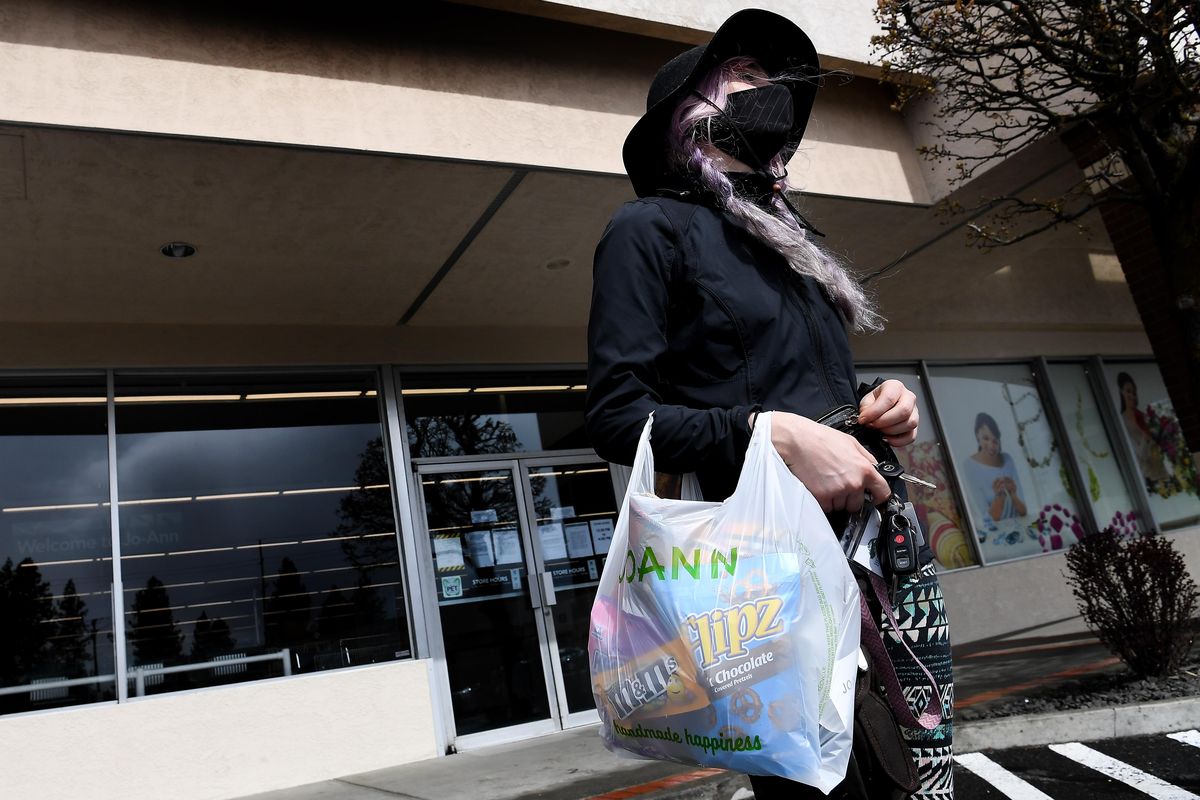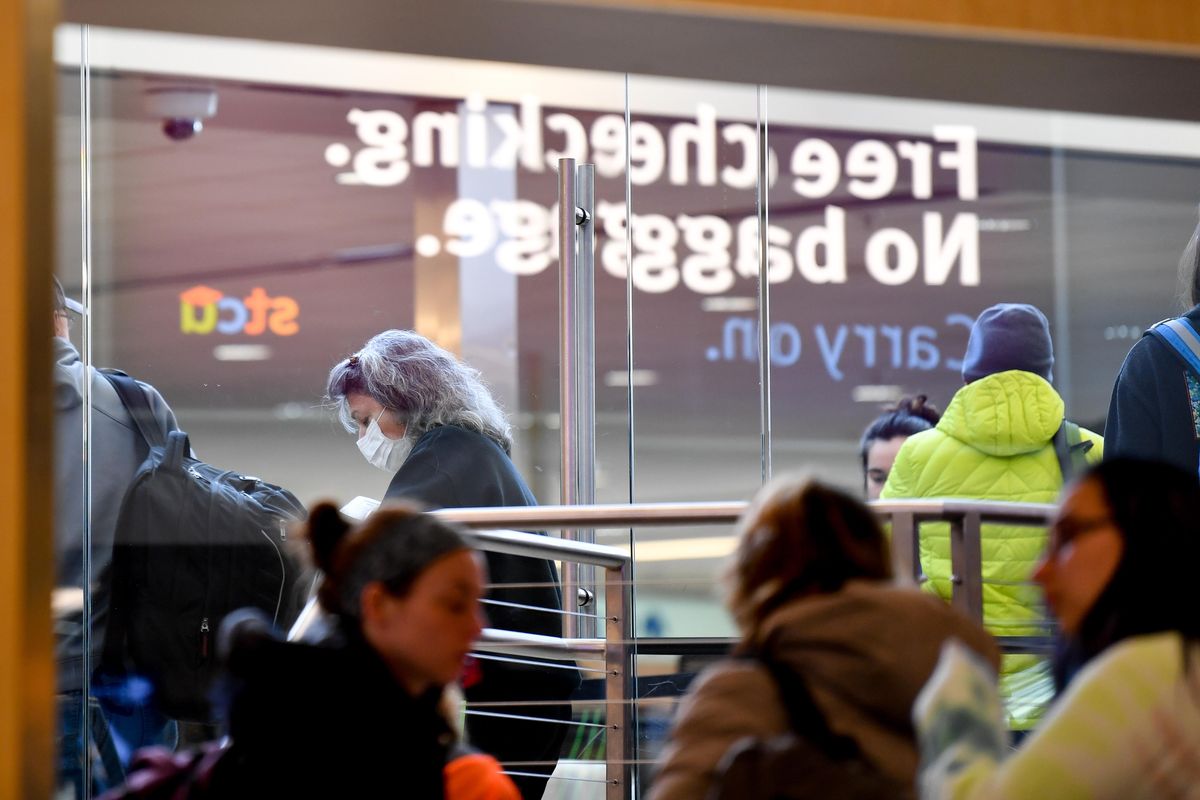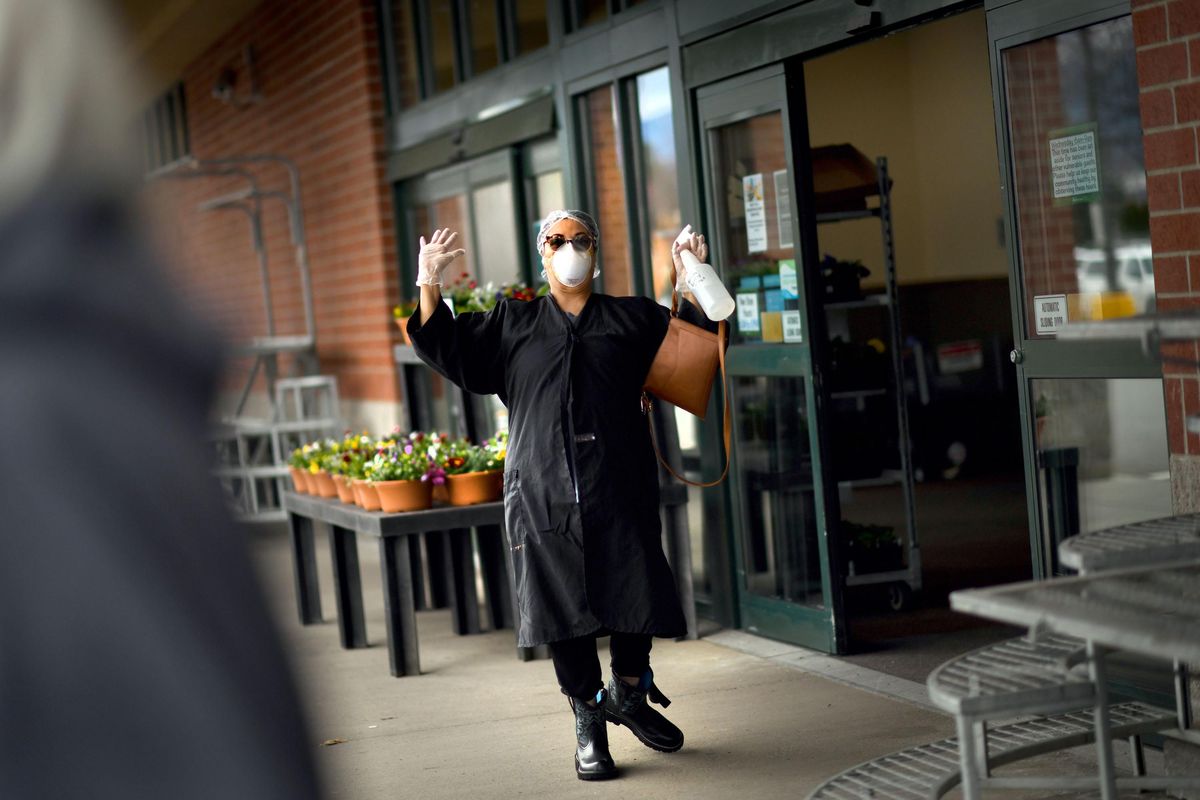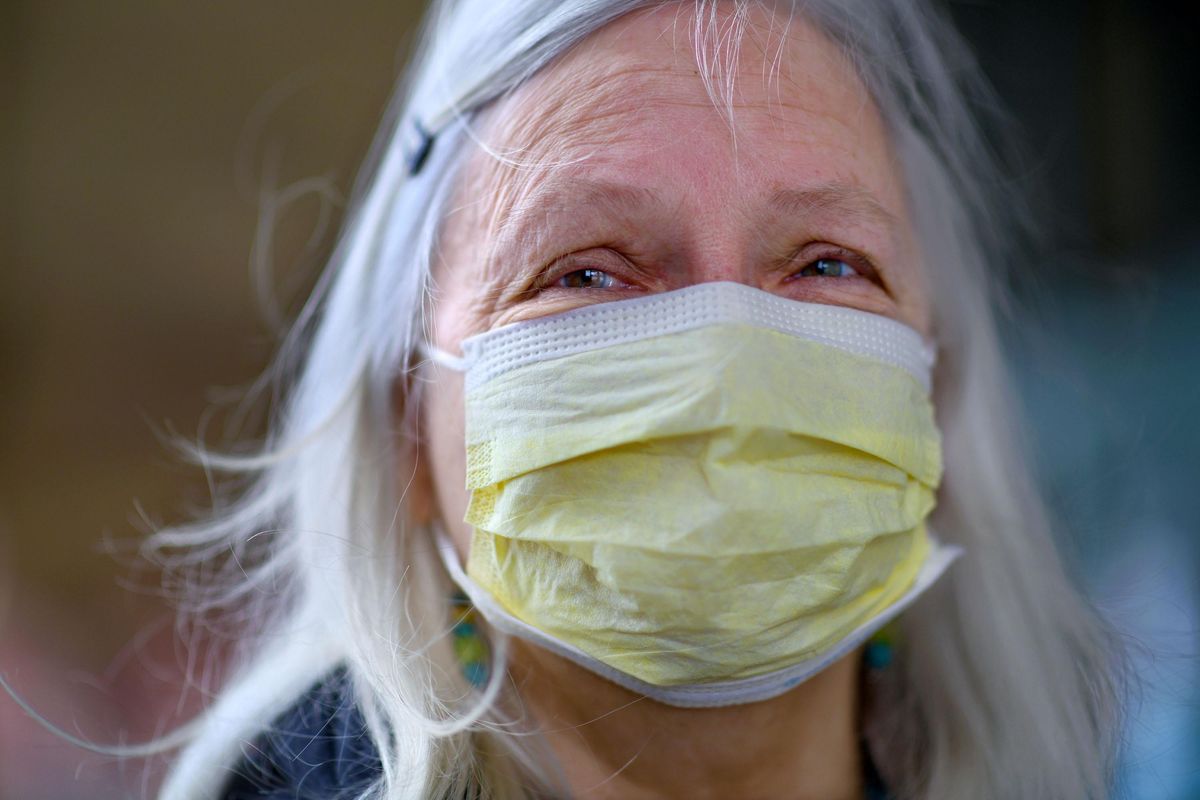Local experts agree with CDC: Masks can help slow virus’ spread but aren’t a substitute for distancing

President Donald Trump’s administration is now recommending that Americans wear nonmedical cloth face coverings in public to slow the spread of coronavirus.
That’s a reversal of previous claims that masks weren’t necessary for healthy people – and it’s a guideline Trump said he doesn’t plan to follow himself.
Spokane health experts reached Friday said following the new guidance from the Centers for Disease Control and Prevention will provide a small amount of protection – mainly for people around the wearer. But they also urged people to adhere to all other COVID-19 prevention guidance, the most important of which is keeping a 6-foot distance from others, even if you’re wearing a mask.
Soon after Friday’s briefing, a spokesman for the Spokane Regional Health District said the agency will now make the same suggestion as the CDC, though with important qualifiers.
“The CDC now recommends that people wear cloth face coverings in public settings where other distancing measures are difficult to maintain, so for example going to your grocery stores or pharmacies where you have to use those essential services,” said Kelli Hawkins, with the SRHD.
“The reason for the change is you can have COVID-19 and be asymptomatic, and then if you are sneezing because of allergies or some other reasons, you could be spreading the virus. It’s less likely, but it could happen.
“It’s more so to protect people around someone who could be asymptomatic. It’s not a safeguard from being exposed. You still have to take all the other precautions,” she said.
If you’re choosing a mask to wear, the new guidance is only for cloth or paper masks that are not medically designated, such as N95 respirators or surgical face masks that are in short supply and needed for frontline health care workers.
"Everyone laughed at me, they're not laughing anymore", says Karen Pagliaro as she walks into Yoke's grocery store armed with a bottle filled with a rubbing alcohol mixture and wearing a mask, gloves, a smock and hair net in Liberty Lake on Friday, April, 3, 2020. She suffers from rheumatoid arthritis and is protecting herself from COVID-19. (Kathy Plonka / The Spokesman-Review)Buy a print of this photo
Local health care officials also caution that those who wear cloth or homespun masks shouldn’t have a false sense of security.
The CDC’s update says: “Maintaining 6-feet social distancing remains important to slowing the spread of the virus. The CDC is additionally advising the use of simple cloth face coverings to slow the spread of the virus and help people who may have the virus and do not know it from transmitting it to others.
“Cloth face coverings fashioned from household items or made at home from common materials at low cost can be used as an additional, voluntary public health measure.”
The Washington State Department of Health issued a similar recommendation as the CDC on Friday, asking that people wear cloth face coverings when they are in public settings where they cannot maintain 6 feet of distance from others.
Some local health officials say cloth masks can offer a small amount of protection around someone who has COVID-19, but not the symptoms. However, they all caution that keeping your distance counts far more.
“As long as we have sufficient PPEs (personal protective equipment) for health care workers, masks are not unreasonable for the public,” said Dr. Darryl Potyk, associate dean for Eastern Washington for the University of Washington School of Medicine.
“It reminds people about the disease and if you have a mask and are unable to maintain that social distancing, it may provide some protection for others, not yourself.”
Denise Smart, of Washington State University in Spokane, has gone through multiple disaster-response military exercises. She’s also incident commander for the WSU College of Nursing’s COVID-19 response.
Smart said it isn’t ingrained in U.S. culture to wear masks when sick in public, whereas many residents in Asian cultures have done so for years.
“What you’ll see are usually more surgical, paper masks that keep you from breathing on and maybe spewing on someone accidentally,” Smart said.
“In our country, certainly we don’t want to be using the precious resources of the N95 masks, because it’s our health care workers, law enforcement and first responders who do need them.”
Some common or homemade cloth masks might have a place to slip in a charcoal filter, Smart said.
“I’ve seen a lot of those both internationally and locally,” Smart said.
She had ordered one before the COVID-19 outbreak, and recently wore it to the grocery store.
“It certainly kept people away from me,” she said.
While there are some limitations to cloth masks or common construction masks to protect the wearer, Smart said they do help as a barrier and reminder not to touch the face.
“They don’t do much to keep particulates out,” Smart said.
“When you look at N95s, those are form-fitting and generally you don’t have a beard or hair – so the surgical masks, the cloth masks and scarves do not protect from anything coming in. You’ll see some gaps where droplets or viruses could enter,” she said.
“In very tight, closed places, if you’re wearing cheaper masks and someone was shedding the virus, you may not have 100% protection, but knowing that, we don’t pay attention to where our hands have touched things, so a mask can remind you not to touch your nose mouth or eyes, and those are three entry points for infection.”
But people still need to keep social distancing and limit public activity.
“I’m concerned that there will be a false scene of security,” she said of wearing masks. “Viruses are very small.”
That’s why N95s are so crucial in the frontline COVID-19 response. N95 masks fall under federal requirements for a close facial fit – actually sized and fitted to the wearer – for efficient filtration of tiny airborne particles. Its designation means that under testing, it blocks at least 95% of very small (0.3 micron) test particles.
“The N95 is designed to actually filter anything you’re breathing in down to the smallest particles,” Smart said.
Some research suggests wearing those for four to eight hours, but in treating COVID-19 patients, some health care workers are pulling 12- to 16-hour shifts with the same mask, she said.
Special battery-powered breathing apparatuses called powered, air-purifying respirators, or PAPRs, are rare and are used in some military and health care environments to provide positive airflow through a filter, cartridge or canister to a hood or face piece, Smart added.
Surgical masks, meanwhile, also are needed for health workers for protection and mainly for their design to help the wearer from breathing directly or spraying respiratory droplets on any open wound or opening in the body, Smart said. The masks help prevent cross-contamination in close quarters.
Potyk said cloth coverings worn in public can serve as reminders not to touch the mouth and nose, and inadvertently touch surfaces.
“We know this disease is transmitted from our nose and mouth to our fingers that touch other surfaces that people can pick up, so hopefully it’s training ourselves not to do that,” he said. “Another thing a mask does is signal to others that ‘I’m taking this disease seriously.’ ”
However, Potyk gave another voice to the warning that masks aren’t substitutes for other measures.
“We don’t want masks to create a false sense of security, and we have to continue with hand hygiene, physical distance, and if you’re sick, definitely don’t go out,” Potyk said.



